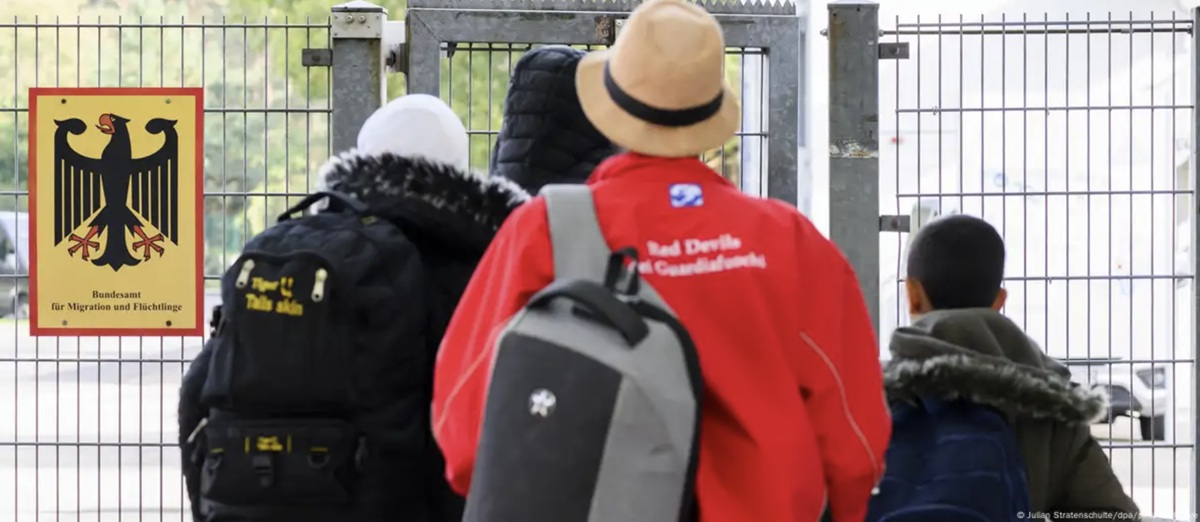Published
4 months agoon
By
Jackson
Germany, long seen as a beacon of hope for those fleeing conflict and persecution, is witnessing a surprising trend: asylum applications have plummeted by nearly 40% in January 2024. This dramatic decline isn’t just a statistic—it’s a reflection of the country’s evolving approach to migration, border security, and its political identity.
The Rise of Stricter Borders
The drop in asylum seekers can be traced back to Germany’s recent crackdown on border controls. Chancellor Olaf Scholz and his Social Democrats (SPD) pushed through a controversial proposal last week, introducing temporary border operations aimed at curbing irregular migration. The move, which passed by a razor-thin margin, has sparked heated debates across the political spectrum.
What’s particularly striking is the role of the far-right Alternative for Germany (AfD) party in shaping this shift. Their nationalist rhetoric has gained momentum, influencing the broader conversation around migration and security. Even the opposition Christian Democrats (CDU), traditionally critical of the far-right, have thrown their weight behind stricter measures, citing concerns over terrorism and public safety.
For asylum seekers, this means fewer opportunities to enter and stay in Germany. The country, once known for its open-door policy during the 2015 refugee crisis, is now tightening its borders in ways that signal a significant policy reversal.
A Closer Look at the Numbers
Interior Minister Nancy Faeser recently highlighted the impact of these new measures. In January alone, unauthorized border crossings dropped by 25%, a clear indication that the stricter controls are having an effect. “Our approach is working,” Faeser stated confidently on February 4. “While others rely on empty promises, we’ve taken concrete steps to ensure order and security.”
Faeser emphasized that Germany’s policies are not just about restriction but also about efficiency. “We’ve streamlined asylum procedures, expedited returns for those who don’t qualify, and strengthened cooperation with our European partners. This is about balancing humanity with the rule of law,” she added.
Political Tensions and a Rightward Shift
The CDU’s recent push for permanent border controls has added fuel to the fire. Chancellor Scholz and the SPD have criticized the move, accusing the CDU of betraying its principles by aligning with far-right ideologies. This political maneuvering has left many wondering: Is Germany drifting to the right?
The answer isn’t straightforward. While the government insists its measures are pragmatic and necessary, critics argue that the country is adopting increasingly conservative policies to address migration challenges. This shift isn’t happening in isolation—it mirrors broader trends across Europe, where nations are grappling with the dual pressures of humanitarian obligations and national security.
What Does This Mean for Germany’s Future?
Germany’s changing stance on migration raises important questions about its identity and values. Is this a temporary response to immediate challenges, or a sign of a deeper political transformation? The coming months will be crucial in determining whether this shift is a fleeting reaction or a lasting change.
For now, one thing is clear: Germany’s approach to asylum and border control is evolving, and the implications will resonate far beyond its borders. As the country navigates this complex landscape, the world will be watching to see how it balances compassion with security in an increasingly uncertain world.


Germany’s New Coalition Government Unveils Stricter Immigration and Citizenship Policies


Mass Protests Erupt in South Korea Over President Yoon’s ImpeachmentAFP


EU Representatives Agree on New Driving License Rules


Erdogan Calls Turkey Protests ‘Evil’ as Unrest Escalates


Former U.S. Attorney Jessica Aber Found Dead at 43


UN Reduces Staff Presence in Gaza Due to Security Concerns


US Government’s Security Blunder: Journalist Accidentally Invited to Secret Chat










